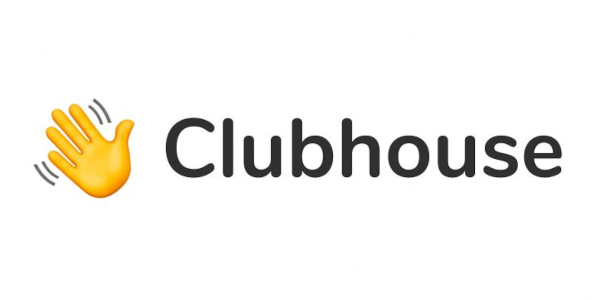After 10 years, we are at the dawn of a new era for WebRTC. This one is going to focus on differentiation and will bring with it new dominant players into the field.

There’s a change in the air. I think it started towards the end of 2019, but now it is quite obvious to see. WebRTC is changing – not the specification but rather who is using it and how it is used.
Table of contents
A look at the history of WebRTC
There’s a slide I showed last week in the workshop of the future of video and real-time communications. It resonated with me with the latest news of Justin Uberti leaving Google. So much so, that I decided to record it separately and share it here as well:
We’ve moved from exploration to growth and now into differentiation when it comes to WebRTC.
What got us there exactly?
WebRTC 1.0

We’ve got that WebRTC 1.0 milestone behind us now.
I haven’t written any special article about WebRTC 1.0, because the main question you need to ask yourself is what changed?
And the real answer is nothing.
The work towards WebRTC 1.0 was important and this is an important milestone. But browser vendors already implemented WebRTC. And vendors already used WebRTC in browsers and native applications as if this was a done deal already.
If you were using WebRTC before, then nothing has changed for you since the announcement of WebRTC 1.0.
And if you haven’t used WebRTC yet, then why start now? What was holding you back so long? The fact that you weren’t sure if it is here to stay???
???? Having WebRTC 1.0 out is an important milestone. More a symbol and a signpost than anything else.
The pandemic

The pandemic got us all quarantined and changed everything.
There’s no new normal to talk about yet, but if you’re believing things are “going back to normal” then you’re wrong.
To put simply:
- More businesses than ever before are just “fine” with employees working from home (or remotely)
- Some businesses are fine doing that ALL the time, permanently
- Other businesses are just as happy if you come to the office only some of the days of the week
- More employees want to work remotely
- Some employees simply don’t want to go back to the office. They’re just fine working from home. They will actively seek such jobs
- Other employees are fine working a few days in the office and the rest remotely, so they don’t have to commute as much while still socializing face to face with their peers
- ALL businesses want to sell more. They couldn’t care less if their clients are buying stuff locally or remotely
- More customers are now fine with purchasing remotely or even being served remotely
These changes are bringing with them a lot of new demand, new use cases and new requirements.
???? What we focused on with WebRTC up until 2020 was suitable for the “old” pre-pandemic world. What we need to focus on now is on the “new” post-pandemic world, one which has slightly different requirements.
???? Talking about requirements, I cover these and how CPaaS and UCaaS are shifting focus due to these requirements
Zoom

Even before the pandemic, Zoom’s IPO has been phenomenal.
After the pandemic, Zoom has become a household name.
Pick any communication service you wish from any vendor in the globe. Randomly pick 100 people from the world’s population. How many of them will know that vendor or service, and how many of them will know Zoom?
Zoom doesn’t really use WebRTC, so why should you?
This is an important question. The appropriate answer is probably one of context. Your context is different from Zoom’s.
- Using proprietary real-time video is a hard problem to solve, so why not use WebRTC instead of solving it yourself?
- Nobody knows you yet, so whatever Zoom has going for it might not necessarily fit your situation
- Zoom is probably installed on most machines today. Your app isn’t. How will you entice potential users to download and install your app?
And yet the WebRTC industry, its stack, the browsers and vendors are consistently being compared to Zoom.
Your ability to compete with Zoom on quality and connectivity is greatly dependent on Google, and what they decide to do with WebRTC.
???? You are not in full control over your destiny.
WebRTC musical chairs

There were a few changes in the people who are working and dealing with WebRTC directly recently. I want to discuss 3 specific cases that I think mark the end of an era.
Dr Alex Gouaillard, CoSMo and Millicast
Dr Alex Gouaillard passed away in April 2021.
Alex has been a known figure in the WebRTC community. His voice on subjects, his passion and his work has made its mark on our industry. He will be sorely missed.
In recent years, Alex focused heavily in the area of live streaming, trying to solve the challenge of broadcasting a WebRTC stream to many participants. He has been a vocal proponent of the use of AV1.
It will be interesting to see who will pick the mantle here and fill the void in explaining and promoting these use cases now.
Nils Ohlmeier, Mozilla (now 8×8)
Nils Ohlmeier has been “the guy” from Mozilla who represented WebRTC in Firefox.
He shared the work Mozilla is doing in Firefox for WebRTC in last year’s virtual Kranky Geek event as part of the browsers panel we did:
Nils switched employers this month, starting to work at 8×8 in the role of Principal Engineer. He will be contributing to the Jitsi codebase and its growth. While Jitsi has a large and vibrant ecosystem, is it anywhere near the size and complexity Mozilla had to deal with?
Who is going to take this role at Mozilla?
Is Firefox interesting as a browser for WebRTC developers and users anymore?
Was it time to move on now that the biggest challenges of WebRTC for browser vendors is “behind” us?
To me, these questions more than anything else mark the change in times.
Justin Uberti, Google Stadia (now Clubhouse)
Justin Uberti was there from the start when it came to WebRTC.
He is considered by many the lead engineer behind the Google Chrome team of WebRTC, and he was part of the original duo (not only the app) – Serge Lachapelle & Justin Uberti.
Justin moved on from the WebRTC team to Google Stadia at the end of 2019. He worked on Stadia related features before that as well.
This month, he decided to move on, leaving Google altogether, pursuing new activities. Justin is staying in the WebRTC industry, as his new role is Head of Streaming Technology at Clubhouse.
Here’s what Justin had to say at Kranky Geek 2018 during Google’s WebRTC update session:
It is truer today than it was in 2018…
Definitely the end of an era.
WebRTC “winners” of 2021
In 2017 I’ve written about 10 Massive Applications Using WebRTC.
That was 3.5 years ago and before anyone thought about quarantines or Zoom.
Fast forward to today, and that list is going to look different.
Two vendors I want to highlight here are Hopin and Clubhouse. They are different from the other vendors we’ve seen in the past who are making use of WebRTC.
Hopin

Hopin is a virtual events platform founded in June 2019, a bit less than two years ago. They couldn’t ask for a better timing (maybe start 6 months earlier?).
Within that timespan, Hopin managed to raise a whopping $571.4M in total and made 4 acquisitions (including StreamYard, Streamable and Jamm).
There are many virtual events platforms ever since the pandemic started but Hopin seems to be the biggest and most widely known one. They have shown that they aren’t shy of acquiring the technologies they need in order to get their feature set where they want it to be.
In 2019, who would have thought a virtual events vendor would be worth $5.65B in valuation by 2021?
Hopin has a nice warchest that they can use to grow their business, attract top notch developers and acquire or acquihire their way to success.
Clubhouse

Another interesting vendor is definitely Clubhouse.
Everyone wants to be Clubhouse these days, but there’s still only a single Clubhouse out there.
Clubhouse started life with the pandemic, in March 2020. After only 14 months it has a valuation of $4B and has been funded well over $100M ($110M by series B in January this year, and another undisclosed series C in April). That’s quite a feat for a voice only, iOS only (until recently) service.
It has a warchest to rival that of Hopin and the same kind of hype behind it to allow it to do practically anything it wanted.
Clubhouse still lacks a real business case, but it doesn’t seem to be stopping it.
Clubhouse is known to be using Agora as their CPaaS vendor, but that may soon change. They hired Justin Uberti from Google, and the only reason for that to me seems to be the desire to own and control their infrastructure.
Google is still the big winner of WebRTC.
If you look at what features are added to WebRTC, then the answer to that is whatever Google needs for its own uses.
These uses now include Google Meet, Google Stadia and Google Assistant.
If your use case has the same requirements in general then you’re in good shape. If you are going “off the reservation”, then prepare for a life of misery if there’s something missing that you need and isn’t in Google’s own set of requirements.
WebRTC is open source up to a point. Not because the code isn’t open and available to all, but because the main implementation is owned and controlled by Google and the main browser you’ll need to work with is Chrome.
Welcome to the new WebRTC
From now on, WebRTC is going to be different.
Talking heads are still an important part of it, but the focus is shifting from a “video chat” or “video conferencing” service into a communication service that is unique. What that is exactly is hard to say, but suffice to say that WebRTC is there in the background.
And fading to the background is exactly what we wanted from WebRTC – the technology is only great once we start forgetting it is there.
Interested in learning more? Read about WebRTC Trends in 2022

Yeah, now after realizing the importance of real time communication specially because of pandemic, lot of tech companies are focussing on building/improving/adding RTC specific techs and control over their stack. Maybe webRTC will be in the background but it’s time to use this piece of technology or it’s experinece to focus on so many other broader use case specific areas.